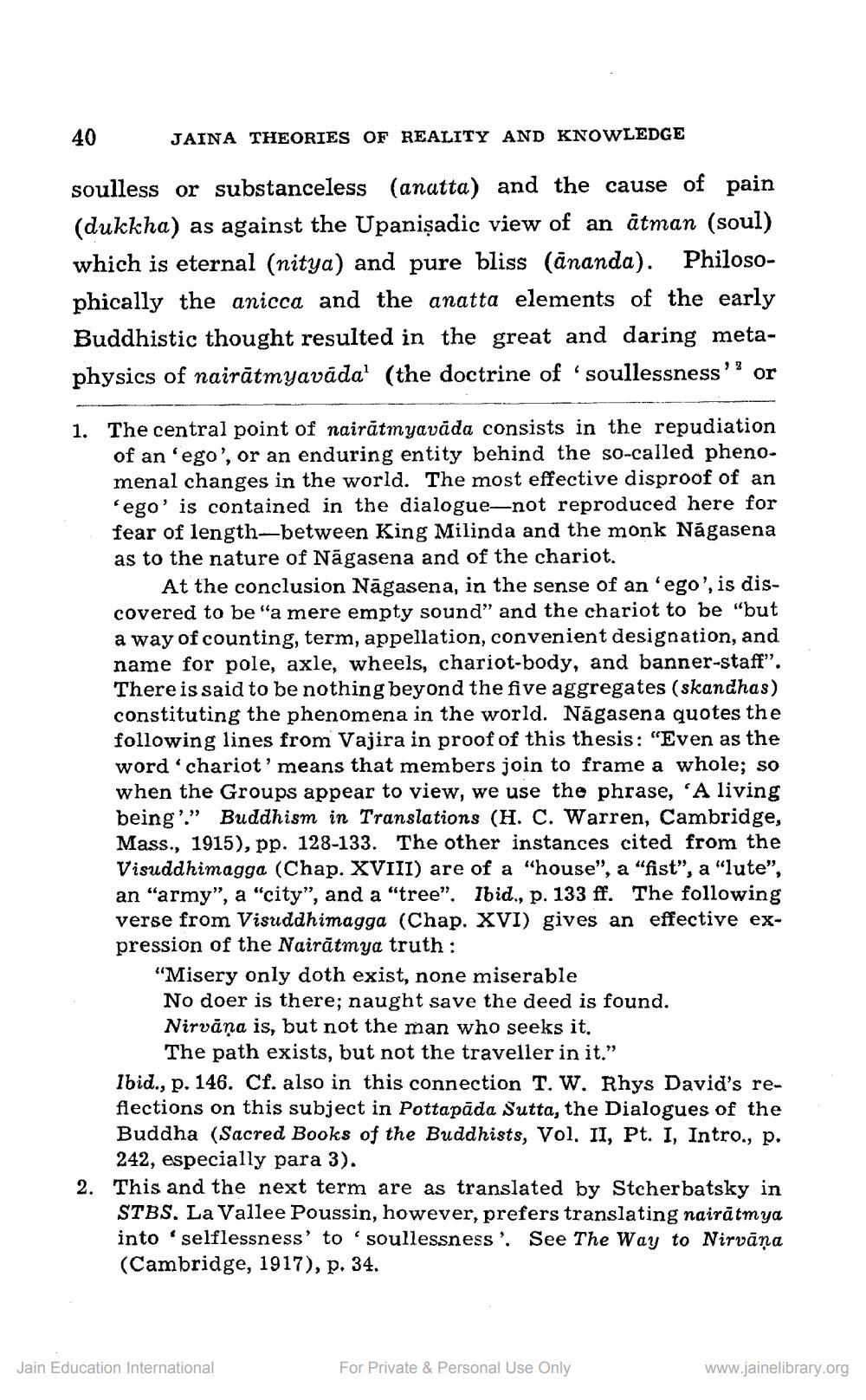________________
JAINA THEORIES OF REALITY AND KNOWLEDGE
soulless or substanceless (anatta) and the cause of pain (dukkha) as against the Upanişadic view of an åtman (soul) which is eternal (nitya) and pure bliss (ānanda). Philosophically the anicca and the anatta elements of the early Buddhistic thought resulted in the great and daring metaphysics of nairātmyavāda' (the doctrine of 'soullessness'' or
1. The central point of nairātmyavāda consists in the repudiation
of an 'ego', or an enduring entity behind the so-called phenomenal changes in the world. The most effective disproof of an Sego' is contained in the dialogue-not reproduced here for fear of length-between King Milinda and the monk Nagasena as to the nature of Nāgasena and of the chariot.
At the conclusion Nāgasena, in the sense of an 'ego', is discovered to be "a mere empty sound" and the chariot to be "but a way of counting, term, appellation, convenient designation, and name for pole, axle, wheels, chariot-body, and banner-staff". There is said to be nothing beyond the five aggregates (skandhas) constituting the phenomena in the world. Nāgasena quotes the following lines from Vajira in proof of this thesis: "Even as the word 'chariot' means that members join to frame a whole; so when the Groups appear to view, we use the phrase, 'A living being'.” Buddhism in Translations (H. C. Warren, Cambridge, Mass., 1915), pp. 128-133. The other instances cited from the Visuddhimagga (Chap. XVIII) are of a "house", a "fist", a "lute", an "army”, a "city", and a "tree". Ibid., p. 133 ff. The following verse from Visuddhimagga (Chap. XVI) gives an effective expression of the Nairātmya truth:
"Misery only doth exist, none miserable No doer is there; naught save the deed is found. Nirvāṇa is, but not the man who seeks it.
The path exists, but not the traveller in it." Ibid., p. 146. Cf. also in this connection T. W. Rhys David's reflections on this subject in Pottapada Sutta, the Dialogues of the Buddha (Sacred Books of the Buddhists, Vol. II, Pt. I, Intro., p.
242, especially para 3). 2. This and the next term are as translated by Stcherbatsky in
STBS. La Vallee Poussin, however, prefers translating nairātmya into 'selflessness' to 'soullessness'. See The Way to Nirvana (Cambridge, 1917), p. 34.
Jain Education International
For Private & Personal Use Only
www.jainelibrary.org




